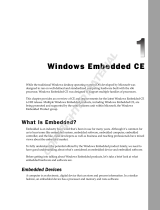
vii
Action routines for tables ...................................................... 48
SNMP OID and string index values ............................................. 57
Chapter 5:
Using the Advanced Web Server PBuilder
Utility
............................................................................................ 59
Overview ................................................................................. 60
The PBuilder utility.............................................................. 60
About the Advanced Web Server Toolkit documentation.................. 61
Running the PBuilder utility........................................................... 61
Linking the application with the PBuilder output files ........................... 63
security.c file .................................................................... 63
cgi.c and file.c files ............................................................. 63
Comment tags ........................................................................... 63
Creating Web pages .................................................................... 64
AWS custom variables ........................................................... 64
Data types ........................................................................ 66
Displaying variables ............................................................. 66
Changing variables............................................................... 67
Security............................................................................ 69
Exceptional cases ................................................................ 70
Controlling the MAW module ......................................................... 70
Setting the semaphore timeout ............................................... 70
Array subscripts .................................................................. 71
Error handling .................................................................... 72
Building the application ........................................................ 73
Phrase dictionaries and compression ......................................... 73
Maintaining and modifying Web content............................................ 74
Sample applications .................................................................... 74
Chapter 6:
Troubleshooting .................................................... 75
Diagnosing errors ....................................................................... 76
Diagnosing a fatal error......................................................... 76
Diagnosing an unexpected exception ......................................... 76
Reserializing a development board .................................................. 77
Observing the LEDs .............................................................. 77
Preparing to reserialize......................................................... 78





















